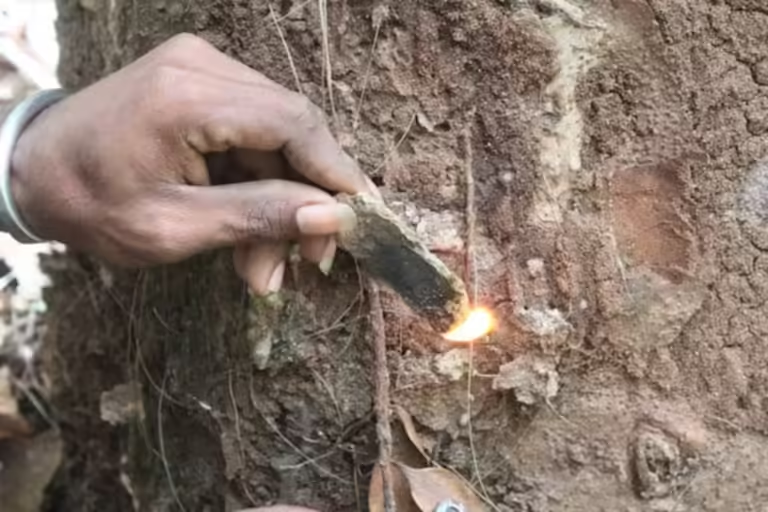Archaeologists in West Papua have discovered ancient resin that they say is the earliest evidence of human arrival in the Pacific Ocean. Published in the journal Antiquity earlier this month, the team describes the hardened resin found in Moloro Cave on Waigeo Island, part of the Raja Ampat archipelago. Excavations at the cave uncovered stone tools, animal bones, charcoal, and resin, but the resin was crucial in determining the date of human presence in the region.
“Some of the bones in the deposits are likely to be natural, such as small rodents and small bats,” Dylan Gaffney, an archaeologist at the University of Oxford and lead author of the paper, said in a statement in Physics. “Other larger animals, such as land birds, marsupials and large bats, are more likely the result of human predation.”
The team also found marine animal remains in the cave (including the teeth of predatory fish and sea urchins), indicating that ancient humans brought them from the coast (9.32 miles/15 kilometers away) and processed them in the cave.
The resin pieces the researchers found were not naturally formed. The team, who described their work in an article for The Conversation, said the resin was made by cutting bark and folding the hardened resin. It’s unclear how it was used, but they speculate it may have been a source of fuel for fires. Radiocarbon dating of the layers where the resin was found suggests that humans were in the cave as early as 55,000 years ago.
When and how humans migrated to the Pacific islands remains a matter of debate. Homo erectus And petite Homo floresiensis They moved across islands (some researchers H. floresiensis It’s just a smaller version Homo erectusThe Mororo Cave Homo sapiensThe assemblage was likely created by a human related to the Denisovans, an enigmatic extinct human group.
The Flores “hobbits” became extinct about 50,000 years ago, and the study suggests that around the same time that early modern humans arrived on Waigeo, the distance between Waitanta (an ancient island now divided into Waigeo and Batanta) and the ancient continent of Sahulu was at its narrowest, just 1.55 miles (2.5 km).
“Although it is likely that Waitanta was first visited by people living further west in Wallacea, it remains possible that humans first entered Sahul via Australia and then rapidly migrated northwest to reach Waitanta from what is now the Birds Head Peninsula in New Guinea,” the study authors write.
The team also simulated the route that ancient humans could have taken to invade New Guinea via the Raja Ampat islands. They now plan to investigate further archaeological sites in the archipelago that may shed light on the exact time of human arrival, and perhaps the exact population of people who were there.

